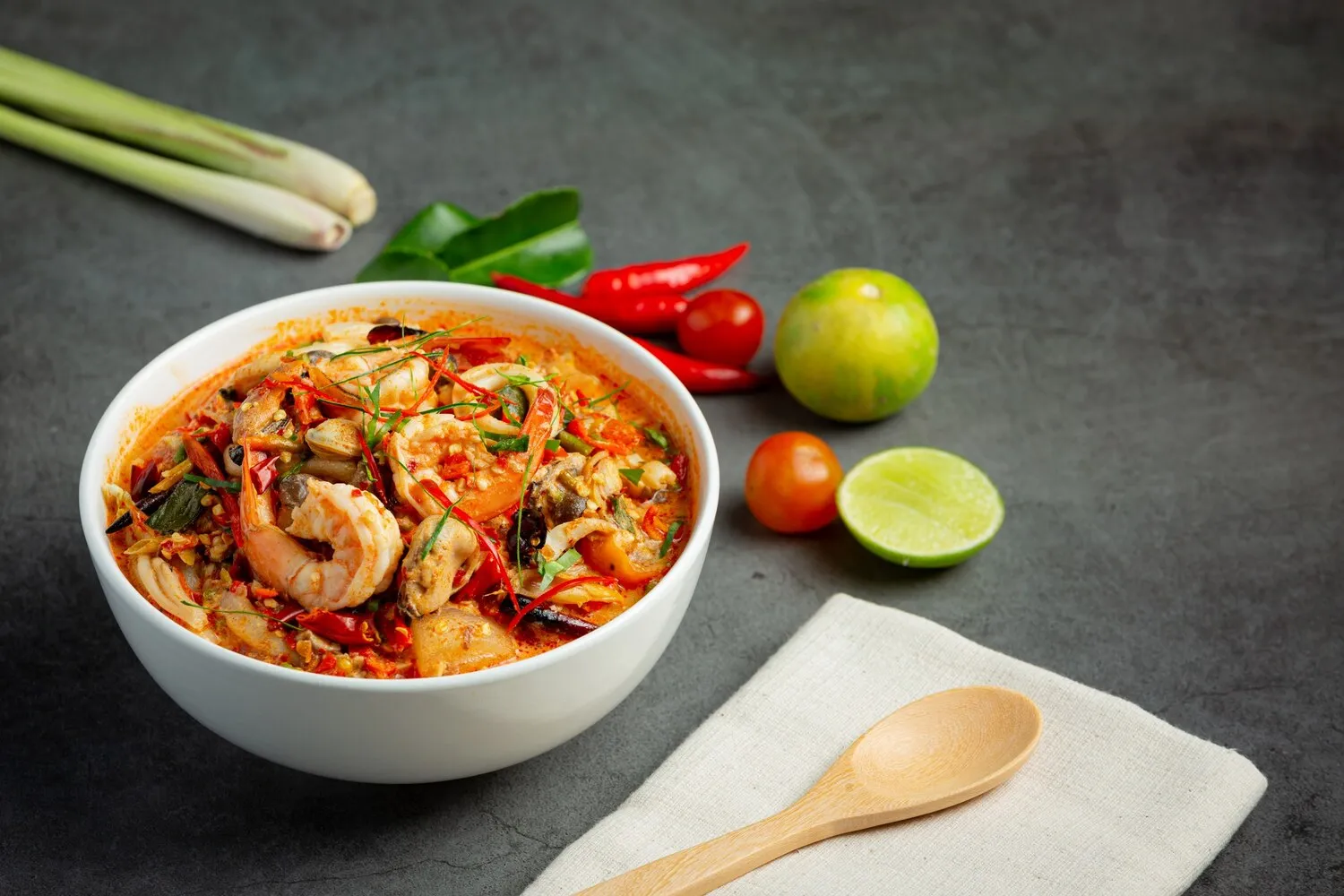
Pho
Traditional Vietnamese noodle soup with broth, rice noodles, herbs, and meat (typically beef or chicken).
Nutrition Facts
* The % Daily Value (DV) tells you how much a nutrient in a serving of food contributes to a daily diet. 2,000 calories a day is used for general nutrition advice.
Pho is believed to have originated in the late 19th century in northern Vietnam, during French colonial rule. Some theories suggest it was influenced by both French pot-au-feu and Chinese noodle soups. The dish gained popularity as a street food in Hanoi and later spread throughout the country.
Pho is more than just a dish in Vietnam; it's a cultural icon, representing family gatherings, street food culture, and national identity.
Family Meal
Pho is often enjoyed as a family meal, particularly on weekends or special occasions. Making the broth is a labor of love, often involving several family members.
Street Food Staple
Pho is a quintessential Vietnamese street food, available from countless vendors throughout the country, from early morning to late at night.
Regional Variations
While the basic concept remains the same, regional variations of Pho exist, with different types of meat, herbs, and broth seasonings.
National Identity
Pho is considered a national dish of Vietnam and is a source of pride for Vietnamese people, both at home and abroad. It is a symbol of Vietnamese cuisine and culture.
Pho is characterized by its deeply savory and aromatic broth, delicate rice noodles, fresh herbs, and tender slices of meat.
The broth is the heart of Pho, typically made by simmering beef bones (for Pho Bo) or chicken bones (for Pho Ga) for several hours with spices like star anise, cloves, cinnamon, coriander seeds, and ginger. The rice noodles, called bánh phở, are flat and wide. Common toppings include thinly sliced beef (rare or cooked), chicken, bean sprouts, lime wedges, cilantro, scallions, Thai basil, and chili peppers. Fish sauce (nước mắm) and hoisin sauce are often added to enhance the flavor.
Broth is Key
The broth is the most important element of Pho. Use high-quality bones and simmer for a long time to extract maximum flavor.
Char the Aromatics
Charring the ginger and onion before adding them to the broth enhances their flavor and adds depth to the soup.
Don't Overcook the Noodles
Cook the rice noodles al dente, as they will continue to cook in the hot broth.
Fresh Herbs are Essential
Use plenty of fresh herbs like cilantro, basil, and scallions to add aroma and flavor to the dish.
Slice meat thinly
If adding rare beef, ensure it is sliced very thinly so it cooks quickly in the hot broth.
Explore additional Soup dishes and restaurants
Explore SoupDiscover top dining spots and culinary experiences in Fayetteville.
Explore FayettevilleLearn more about the food culture, restaurant scene, and culinary heritage of United States.
Explore United States